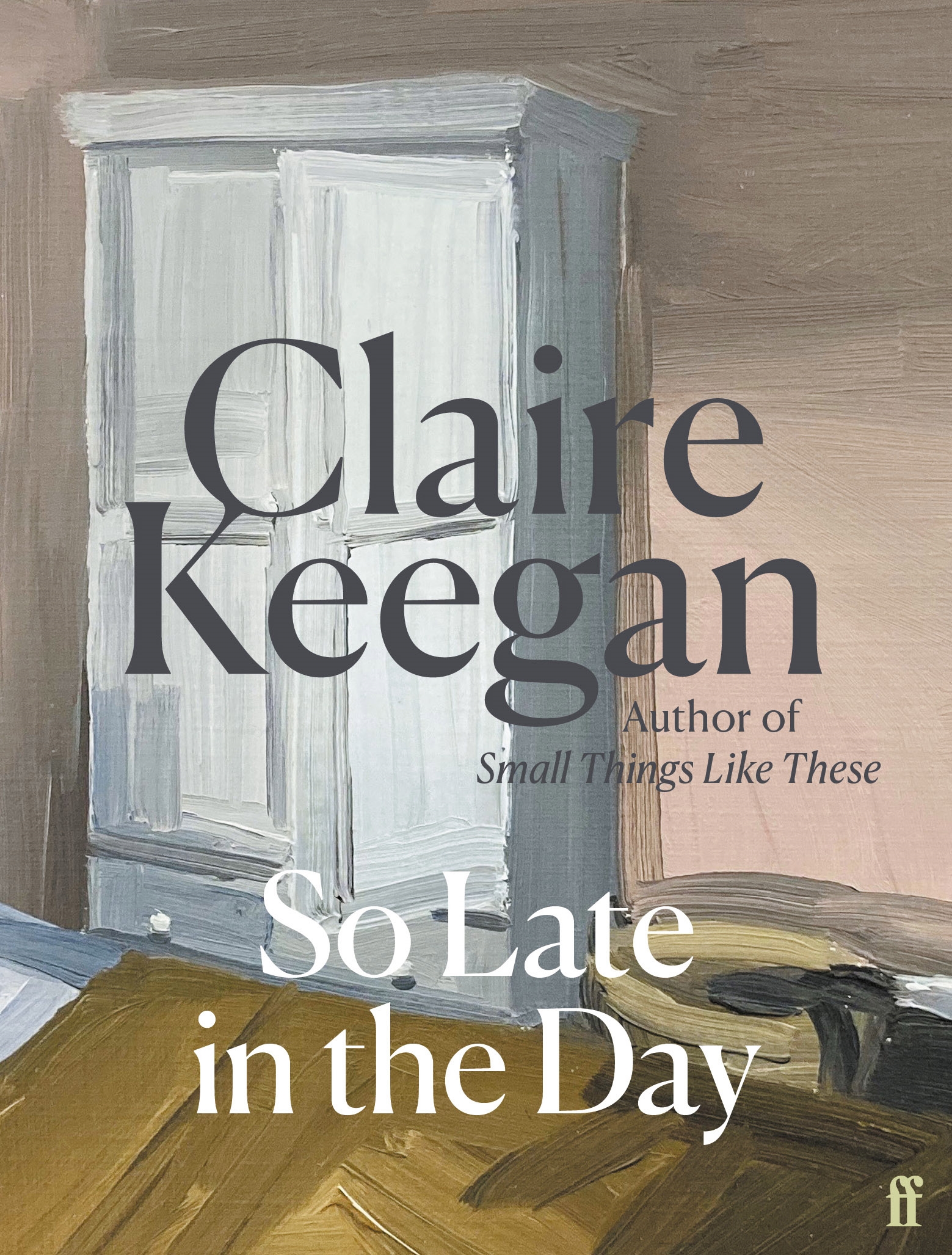Claire Keegan is rapidly becoming a household name, with the resounding critical acclaim her works garner. This is no wonder as, after completing her undergraduate studies at Loyola University in New Orleans, she earned an M.Phil. here at Trinity. Her 2010 short story Foster, about a girl who finds care and affection when sent to live with relatives for the summer, was made into the 2022 Oscar-nominated film An Cailín Ciúin (The Quiet Girl). Her most recent work, So Late in the Day, is the follow up to her novel Small Things Like These (2021), which was shortlisted for the 2022 Booker Prize. So Late in the Day first appeared in the New Yorker magazine and has recently been published in a standalone hardback edition.
It is a character study of great style and subtlety in which we follow Cathal, a middle-aged office worker at the Arts Council on Merrion Square, over the course of an uneventful day. While there are scarcely any dramatic moments, the undercurrent of tension speaks to a latent unrest in his life. The exchanges between him and others are taciturn, mostly in the fashion of the uncommunicative Irish man who is invariably “grand”. Through flashbacks we learn of how Cathal’s low-level misogyny may have cost him the relationship which offered him perhaps his only chance at happiness. This misogyny manifests mostly in out-dated assumptions about how women should act to accommodate him, and also in a lack of generosity.
Keegan vividly portrays the emotional inarticulacy and illiteracy of her central character, as well as his efforts to deflect and ignore the pain resulting from his own faults. Also shown is his unwillingness to confront how his upbringing has shaped him. He feels “the long shadow of his father’s language crossing over his life” and, later on, wonders “how he might have turned out if his father had been another type of man”, but fails to interrogate this legacy further.
Keegan’s protagonist is shown to be a product of the misogynistic household in which he was raised – one representative of the Ireland of Keegan’s childhood. This was a much more backward country, concerned with keeping Irish women in the home for the purpose of child-bearing, cooking, cleaning and child-rearing following its religious backbone. This is illustrated by the fact that it was only upon Ireland’s entry into the European Economic Community (now the European Union) in 1973 that the “marriage bar” was lifted. This provision formerly meant that women working in the public sector (as well as some in the private sector) had to give up their jobs upon marriage. Additionally, it was not until 1985 that contraception was legalised without a prescription, and 1990 that a law against marital rape was passed. A legacy of the prejudice against women that went along with such laws can still be felt in Ireland today, as Keegan’s story shows, despite the advancements which the country has thankfully made over the years.
Most importantly, the story’s formal style is a pleasure to read – unpretentious, and refined, with an abundance of commas, to slow the pace. The dialogue, in its depiction of banal exchanges, suggests ambivalent significance.
Should you read this story? If you like good fiction, yes. Should you buy the new hardback edition? Well, it’s nicely bound. You might find that a bit steep for a book you can expect to read in one sitting, though it’s certainly worth rereading. So if you, like its protagonist, are reluctant to put your hand in your pocket, it’s also available for free on The New Yorker’s website.








